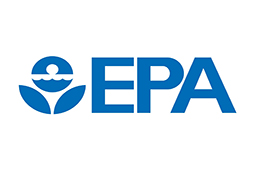
Mercury limits on coal plants no longer 'appropriate,' EPA Says


For now, at least, the Environmental Protection Agency isn’t seeking to rescind the 2012 standards, responding to a clamor from utilities that have already spent at least $18 billion complying with the requirements. But the EPA is asking the public to comment on whether it has the authority or obligation to do so, opening the door to a possible future repeal.
And, in another reversal of former President Barack Obama’s environmental policies, the agency now finds that the mercury mandates cost far more than the potential benefits that spring from paring emissions of the toxin. According to the new EPA analysis, the costs of complying with the rule are projected at $7.4 billion to $9.6 billion annually, while monetized benefits are estimated to be just $4 million to $6 million each year.
Environmentalists blasted the move, saying the agency was engaging in “funny math” and cherry picking data to claim the mercury standards are too expensive.
‘Dangerous precedent’
The EPA is “setting a dangerous precedent that a federal agency charged with protecting the environment and public health will no longer factor in all the clear health, environmental and economics benefits of clean air polices, such as reducing cancer and birth defects,” said Senator Tom Carper, a Democrat from Delaware.
The new calculations represent a dramatic shift from the EPA’s 2012 estimate that that the requirements would lead to $37 billion to $90 billion worth of benefits from fewer asthma attacks, heart attacks and premature deaths — mostly by indirectly reducing airborne particle pollution.
President Donald Trump’s EPA now is effectively ignoring those so-called co-benefits and focusing only on the direct potential benefits from slashing mercury emissions.
Obama’s EPA justified the decision to regulate power plant mercury emissions “almost entirely on reductions in fine particles,” even though “there are many other sections of the Clean Air Act that give EPA authority to regulate fine particles,” said Jeff Holmstead, an assistant EPA administrator under former President George W. Bush. “For a lot of folks, this was just another example of Obama regulatory overreach.”
Nervous system damage
Coal-fired power plants are the largest U.S. source of mercury, a metal that is converted in soil and water into a neurotoxin that can lower IQ, cause motor function deficits, damage the nervous system, and lead to more heart attacks.
Armed with the new cost-benefit analysis, the EPA is proposing it is not “appropriate and necessary” to regulate hazardous air pollution emitted from power plants under the Clean Air Act. The EPA is also asserting there are no new advances in pollution controls that justify the cost of further reducing mercury and other toxic pollutants.
The EPA isn’t proposing to eliminate the standards directly for now, a recognition that under a 2008 decision by the U.S. Court of Appeals for the D.C. Circuit, the agency generally must go through a separate delisting process to remove power plants from such regulation.
However, public health officials worry the agency is setting the stage to do just that, by seeking public comment on whether it has the authority or obligation to delist power plants or rescind the standards.
‘Stunningly immoral’
“This entire proposal is designed to undermine the Mercury and Air Toxics Standards,” said Paul Billings, senior vice president of advocacy at the American Lung Association. “Asking for comment seems to open the door to finalize a rule that includes rescinding and/or delisting.”
Fred Krupp, president of the Environmental Defense Fund, said the Trump administration was taking a “stunningly immoral and completely unnecessary” step to undermine the mercury standards.
“No one can truthfully claim they are demolishing the foundation of a building but they still expect the building to stand,” Krupp said. “This proposal puts the Mercury and Air Toxics Standards in danger, and we need the Mercury and Air Toxics Standards to keep our children safe.”
‘Important development’
The 2012 requirements prompted a wave of closures of coal-fired power plants. Coal miners have pushed the Trump administration to reverse the standards, arguing that they discouraged power companies from burning the fossil fuel to generate electricity, causing sales to suffer.
Coal miner Murray Energy Corp., which challenged the mercury standards in federal court, praised the Trump administration’s action on Friday, calling it an “important development in reversing the illegal policies and programs of the Obama administration and the Obama-era EPA.”
“EPA’s proposal to revisit the outsized role that so-called ‘co-benefits’ play in the cost-benefit analyses used to justify costly regulations targeting pollutants such as mercury is appropriate and long overdue,” the company said in an emailed statement.
Don’t Tread on MATS
The Trump administration’s proposal drew a lukewarm response from power utilities that have already installed pollution control equipment to comply with the standards.
“EPA should leave the underlying MATS rule in place and unchanged, and should not finalize any action that would undermine the existing MATS rule,” said Brian Reil, a spokesman for the utility trade group Edison Electric Institute. “Since the MATS rule took effect in 2012, electric companies
have reduced mercury emissions by nearly 90 percent.”
Energy analysts say that even a broad repeal of the mercury standards would do little to alter long-term shifts in the electricity market, as cheap, cleaner-burning natural gas displaces coal as a source of power.
“Even without the mercury rules, nothing is going to save coal,” said Shahriar Pourreza, a utility analyst at Guggenheim Partners LLC. “Outside of environmental policy, coal plants are uneconomical.”
The mercury standards have been the subject of litigation for years. After they were imposed in 2012, the coal industry sued, ultimately forcing the EPA to revisit its conclusions. The Obama administration reinstated the regulation in 2016 and Murray Energy sued to block it, but a federal appeals court delayed the case so the Trump administration could reconsider the rule.


Trump weighs using $2 billion in CHIPS Act funding for critical minerals

Codelco cuts 2025 copper forecast after El Teniente mine collapse

Electra converts debt, launches $30M raise to jumpstart stalled cobalt refinery

Barrick’s Reko Diq in line for $410M ADB backing

Abcourt readies Sleeping Giant mill to pour first gold since 2014

Nevada army depot to serve as base for first US strategic minerals stockpile

SQM boosts lithium supply plans as prices flick higher

Viridis unveils 200Mt initial reserve for Brazil rare earth project

Tailings could meet much of US critical mineral demand – study

Kyrgyzstan kicks off underground gold mining at Kumtor

Kyrgyzstan kicks off underground gold mining at Kumtor

KoBold Metals granted lithium exploration rights in Congo

Freeport Indonesia to wrap up Gresik plant repairs by early September

Energy Fuels soars on Vulcan Elements partnership

Northern Dynasty sticks to proposal in battle to lift Pebble mine veto

Giustra-backed mining firm teams up with informal miners in Colombia

Critical Metals signs agreement to supply rare earth to US government-funded facility

China extends rare earth controls to imported material

Galan Lithium proceeds with $13M financing for Argentina project

Kyrgyzstan kicks off underground gold mining at Kumtor

Freeport Indonesia to wrap up Gresik plant repairs by early September

Energy Fuels soars on Vulcan Elements partnership

Northern Dynasty sticks to proposal in battle to lift Pebble mine veto

Giustra-backed mining firm teams up with informal miners in Colombia

Critical Metals signs agreement to supply rare earth to US government-funded facility

China extends rare earth controls to imported material

Galan Lithium proceeds with $13M financing for Argentina project

Silver price touches $39 as market weighs rate cut outlook

















